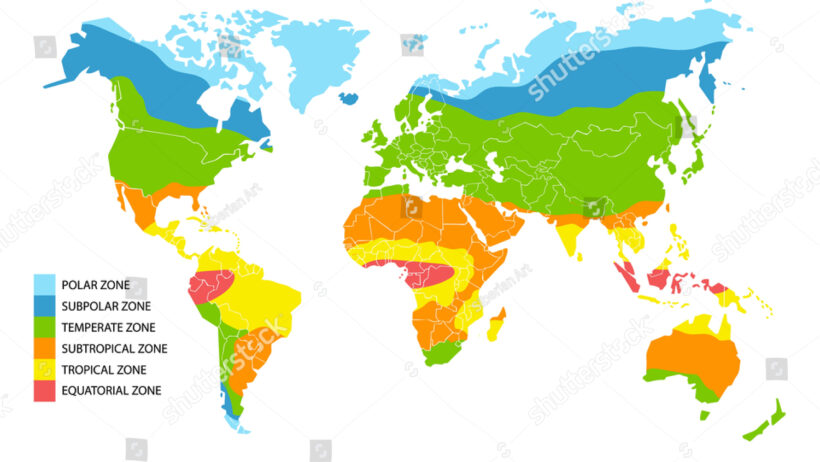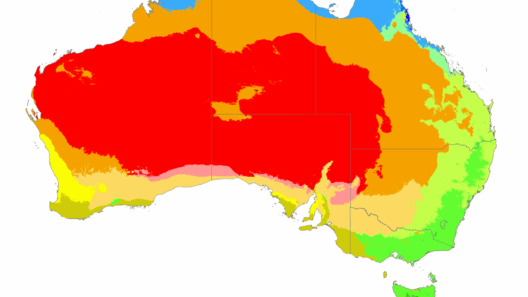Climate classification is a fascinating and intricate subject, pivotal to understanding the diverse ecosystems that thrive on our planet. With various methodologies for delineating climate types, glancing at the question “How many climates are there on Earth?” reveals the complexity and diversity of the Earth’s climates.
Historically, climates have generally been categorized using several significant systems, most notably the Köppen climate classification system, developed in the early 20th century by Russian climatologist Wladimir Köppen. This method is predicated upon the vegetation types that correspond to seasonal temperature and precipitation patterns. The Köppen system organizes the world’s climates into five primary groups, each of which can be further sub-divided based on specific temperature and moisture criteria. This classification remains widely accepted among climatologists, and it establishes a robust framework for examining climate zones.
Delving into the five primary Köppen types, we encounter five distinct categories: tropical, arid, temperate, cold, and polar climates. Within these broad categories, the rich tapestry of sub-climates emerges, each possessing unique characteristics and conditions.
Firstly, tropical climates encapsulate regions where mean monthly temperatures regularly exceed 18 degrees Celsius (64 degrees Fahrenheit). These climates, typically located near the equator, engender lush, verdant ecosystems characterized by high biodiversity. Tropical rainforests, savannas, and monsoon climates belong to this category, showcasing a remarkable variance in vegetation and animal life. The vitality of these ecosystems is paramount; they serve as a carbon sink, absorb CO2 from the atmosphere, and produce significant oxygen, factors essential in climate regulation.
Next, we confront arid climates, distinguished by their scarcity of precipitation. These zones, often referred to as deserts, cover vast expanses of land and exemplify extreme temperature fluctuations. Some notable examples include the Sahara and the Arabian deserts. Despite their harsh conditions, distinct life forms have adapted ingeniously, employing an array of survival mechanisms, from nocturnal behaviors to specialized physiological features. This resilience underscores not merely survival, but an epochal adaptation to challenging environments.
Transitioning from the extremes of aridity, temperate climates emerge as fertile regions with moderate environmental conditions. The temperate zones experience four distinct seasons—spring, summer, autumn, and winter. This seasonal differentiation results in a plethora of ecosystems, from deciduous forests blanketed in autumn leaves to the vast grasslands supporting various herbivores. The temperate climate’s variability promotes a dynamic agricultural landscape, advantageous for cultivating diverse crops. This adaptability to agricultural practices renders temperate regions critical in food production on a global scale.
Shifting focus, cold climates present a stark contrast, marked by their frigid temperatures. These regions can be found at higher latitudes, where winters are typically long and severe. The subarctic and tundra climates exemplify this category, featuring short growing seasons and unique adaptations among flora and fauna. This environment functions not only as a climate zone but as a vital indicator of climate change. Melting permafrost and shifting species migration patterns are emblematic of a broader environmental crisis, urging urgent responses from the global community.
Finally, polar climates inhabit the most extreme latitudes, characterized by ice-covered terrain and minimal vegetation. The Arctic and Antarctic regions experience long durations of sunlight in summer, contrasted with perpetual darkness in winter. These polar environments are host to a unique assemblage of species, including polar bears and penguins, showcasing Nature’s adaptability to such challenging climates. However, these ecosystems are increasingly in peril due to anthropogenic climate shifts, resulting in alarming implications for global sea levels and weather patterns.
A further analysis reveals that while the Köppen system is prominent, there are alternative classification systems. The Thornthwaite system, for instance, introduced a more nuanced approach by incorporating moisture balance and evapotranspiration rates, resulting in a classification that can yield climatically detailed areas within broader Köppen categories. Similarly, other frameworks, such as the Holdridge life zones, focus on bioclimatic aspects, which integrate temperature, precipitation, humidity, and vegetation types more comprehensively.
Ultimately, how many climates exist on Earth is contingent on the classification system applied. Under the Köppen system, an array of approximately 14 sub-classifications allows for a more granular understanding of the Earth’s climates. This classification not only serves to demarcate physical environments but also illustrates how different communities inhabit and adapt to varied climates. The interplay between climate zones and human society is integral to discussions surrounding sustainable practices, environmental policies, and climate action initiatives.
In the face of global climate challenges, recognizing the diversity of Earth’s climate zones fosters a paradigm shift in understanding how local ecosystems interact with broader ecological processes. Grasping the intricacies of how these climates influence human activity and natural phenomena encourages a profound respect for our planet’s fragility and resilience. As we grapple with pressing issues such as climate change, acknowledging the myriad climates on Earth is not merely an academic endeavor but a requisite understanding in fostering a sustainable future.
In summary, while the number of climates can be articulated through various lenses, what remains undisputed is their importance to planetary health and human existence. From the humid tropics to the frigid poles, our planet embodies a tapestry of climates that warrant preservation and respect. As we move forward, understanding and valuing the diversity of climates may indeed hold the key to mitigating the challenges posed by climate change, cultivating a harmonious balance between human activity and environmental stewardship.








